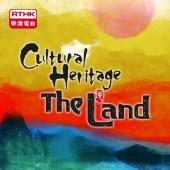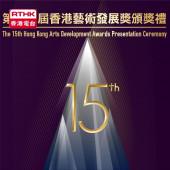 Loading ...
Loading ...Epi 1 The Sands of Time
2018-07-21
返回
Epi 1 The Sands of Time
2018-07-21
Situated in northwestern China at the centre of Tarim Basin, Xinjiang, Taklamakan Desert covers a total area of approximately 330,000 square kilometres, making it the largest desert in the country and the second largest sand-shifting desert in the world. With little sign of life, long daylight and extremely high temperature, humans can only survive in oases that provide them with water.
Keriya River means “to drift without settling” in Uyghur. Named for its frequent flow diversion due to seasonal floods, the stream comes from the main peak of the Kunlun Mountain, flowing into Taklamakan Desert from south to north. The river is a nurturing ground both for plants, which give rise to a green corridor in the middle of the desert, and for Keriyan people, who are isolated from the rest of the world.
In as early as 1896, Swedish expeditioner Sven HEDIN went deep inside the desert, discovering the heritage of Dandan Uiliq and Ka La Dun from Han and Tang Dynasties amid the desert’s vastness. There is an extensive forest of populus euphratica, in which he even met a group of people who lived along the river in the primitive way of grazing. His travel journals became the earliest written record of Keriyan people’s lives.
With the current population of around 1,500, Keriyan people are among the few groups of Chinese who still reside in the desert. Mainly found in oases near the Keriya River with the distance between households ranging from several to thirty or forty kilometres, these Islamic residents lead simple and unadorned lives. As they have been excluded from the rest of the world for a long period of time, they still keep the habits of their ancestors. Their adaptability to the unforgiving environment is reflected in everything from their lifestyle and food to architectural style and more.
However, with economic development and construction of highways in Xinjiang, Keriyan people are getting closer to urban areas gradually. As modern cultures and technologies infuse into their everyday life bit by bit, we cannot help but wonder: can we still find traditional Keriyan people amidst the great wide desert after some years?
Assistant Producer: Dorothy YIP
Producer: Leo LAI
Keriya River means “to drift without settling” in Uyghur. Named for its frequent flow diversion due to seasonal floods, the stream comes from the main peak of the Kunlun Mountain, flowing into Taklamakan Desert from south to north. The river is a nurturing ground both for plants, which give rise to a green corridor in the middle of the desert, and for Keriyan people, who are isolated from the rest of the world.
In as early as 1896, Swedish expeditioner Sven HEDIN went deep inside the desert, discovering the heritage of Dandan Uiliq and Ka La Dun from Han and Tang Dynasties amid the desert’s vastness. There is an extensive forest of populus euphratica, in which he even met a group of people who lived along the river in the primitive way of grazing. His travel journals became the earliest written record of Keriyan people’s lives.
With the current population of around 1,500, Keriyan people are among the few groups of Chinese who still reside in the desert. Mainly found in oases near the Keriya River with the distance between households ranging from several to thirty or forty kilometres, these Islamic residents lead simple and unadorned lives. As they have been excluded from the rest of the world for a long period of time, they still keep the habits of their ancestors. Their adaptability to the unforgiving environment is reflected in everything from their lifestyle and food to architectural style and more.
However, with economic development and construction of highways in Xinjiang, Keriyan people are getting closer to urban areas gradually. As modern cultures and technologies infuse into their everyday life bit by bit, we cannot help but wonder: can we still find traditional Keriyan people amidst the great wide desert after some years?
Assistant Producer: Dorothy YIP
Producer: Leo LAI
Cultural Heritage-The Land - a series of 8 episodes focus on the geographical beauty of mainland China.











